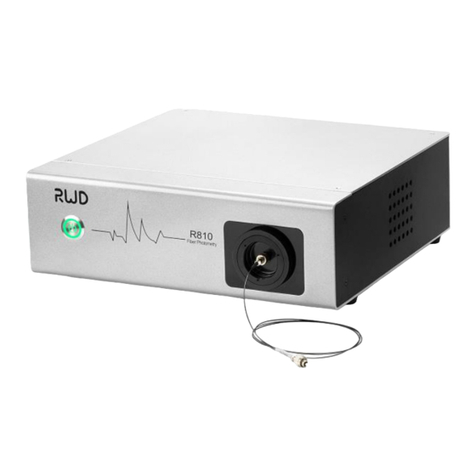
read and familiar with the instruction manual.
To ensure proper function of your system, perform a pre-use checkout procedure in
accordance with Section 5 - Operation.
The system must always be attended by a veterinarian or trained anesthesia technician.
After guarantee period, annual service inspections to ensure proper operation is
recommended. Only RWD-certified technicians should be permitted to service the system
or replace internal parts.
Keep open flames and combustibles (e.g., ether and acetone) away from the anesthesia
system.
Do not place any heavy things on the anesthesia system.
Make sure that the air connection hose is unobstructed to avoid blockage.
Wearing personal protective equipments is suggested.
Make sure the air connection hose is securely connected to the system before starting a
procedure.
Make sure that any exhaled gas containing anesthetic is vented outside of the operating
room or recycled by other proper equipment.
RWD recommends the use of an electrocardiograph, and equipment capable of monitoring
the animal’s pulse, oxygen (O2) saturation, carbon dioxide (CO2) level, and anesthetic
agent level at all times when operating the system.
Remove the system from service if any indications of improper function exist, and contact
RWD.
Never pour any other fluids into the anesthetic vaporizer except the anesthetic agent for
which it is designed, note the identification outside the vaporizer before use.
Avoid use of oil or grease on any anesthesia or respiratory equipment where oxygen is
used. An explosion may occur.
Make sure the pressure of the oxygen is below 0.42MPa。
2.4.2 Preventing system and facility damage
Immediately collect and clean up spilled anesthetic.
Isoflurane is very caustic, avoid it contact with mask and other components if spillage
occurs. If spillage should occur, allow it to evaporate. Do not attempt to wipe it with a
cloth.
Do not place anything on top of the anesthesia equipment.
Follow all recommended system maintenance procedures specified in Section 7 -
Maintenance.
Keep appropriate distance from the wall to ensure a stable gas supply.
Ensure the stability of gas supply.
2.4.3 Environmental health
Immediately collect and clean up any spilled anesthetic agent.
If the system is used in a confined space, ensure that there is adequate ventilation.
Dispose of any hazardous materials and items contaminated with hazardous materials
should be in accordance with local regulations.





























